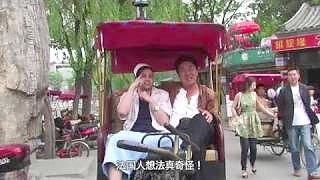
|
With MisterVaughn ...
Welcome to Yuan Dadu City Wall Park
Discover the ancient walls of Beijing
About Yuan Dadu City Wall Park
Yuan Dadu City Wall Park is a historical park located in the northern part of Beijing, encompassing the remnants of the city walls from the Yuan Dynasty (1271-1368). The park preserves a section of the ancient city walls and provides visitors with a glimpse into the rich history of Beijing. The park stretches for several kilometers and is a popular spot for both locals and tourists to relax, exercise, and learn about the city's past.
Main Attractions
Ancient City Walls
The park features well-preserved sections of the ancient Yuan Dynasty city walls. These walls, originally built to protect the capital, now stand as a testament to the architectural prowess and historical significance of the Yuan Dynasty.
City Wall Relics Museum
Located within the park, the City Wall Relics Museum offers an in-depth look at the history of the Yuan Dadu city walls. The museum displays artifacts, historical documents, and detailed models of the ancient city.
Scenic Walkways
The park features beautifully landscaped walkways that run alongside the ancient walls. These walkways are perfect for leisurely strolls and provide visitors with picturesque views of the park's greenery and historical structures.
Peony Garden
The Peony Garden, located in the park, is a must-visit during the blooming season in spring. The garden showcases a stunning variety of peonies and is a popular spot for photography and relaxation.
Activities
Morning Exercises
Yuan Dadu City Wall Park is a popular spot for locals to perform morning exercises such as tai chi, dancing, and jogging. Visitors can join in or simply enjoy watching these traditional Chinese activities.
Photography
The park offers excellent opportunities for photography, especially around the ancient city walls and gardens. Capture the historical essence and natural beauty of the park in your photos.
Seasonal Festivals
Yuan Dadu City Wall Park hosts various cultural events and festivals throughout the year, such as the Peony Festival in spring and traditional Chinese cultural performances. These events provide a deeper understanding of the local culture and history.
Transport
Yuan Dadu City Wall Park is easily accessible from various parts of Beijing. Here are some ways to get there:
By Subway: Take Line 10 to Jiandemen Station, then walk north for about 10 minutes to reach the park.
By Bus: Multiple bus routes stop near Yuan Dadu City Wall Park, including routes 27, 55, and 305. Get off at the Dadu Ruins Park stop.
By Taxi: Taxis are a convenient option, especially if you are traveling with a group or have heavy luggage. Just ask the driver to take you to Yuan Dadu City Wall Park (元大都城垣遗址公园).
|

 Christmas carnival at Window of the World, ChangSha, provincial capital of HuNan
Christmas carnival at Window of the World, ChangSha, provincial capital of HuNan






